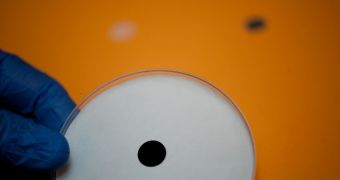A group of investigators at the Rice University announces the development of a new type of battery, which is fashioned directly into a nanoscale wire. Scientists in the research group believe that this may very well represent the equivalent of the lithium-ion battery at the small scale.
Almost every piece of electronic equipment that needs a mobile power source runs on lithium-ion batteries today, including cell phones, laptops, tablets, mp3 players, headphones, keyboards and mice.
There is currently a great effort underway worldwide to discover ways of improving the efficiency and energy-storage abilities that these batteries have, but the issue is very complex, and many research teams have hit blocks.
What Rice professor Pulickel Ajayan and his team did was pack the entire energy that a standard Li-ion battery can hold into a tine wire, at the nanoscale. A nanometer is one billionth of a meter, he explains.
Details of the investigation appear in this month's issue of the American Chemical Society's (ACS) esteemed scientific journal Nano Letters. The research team says that this is about as small as any such device can ever get.
Their innovation could be made into the rechargeable power source for the next generations of nanoelectronic equipment. The battery/supercapacitor hybrid was developed in two versions, and the Rice team tested them both before publishing the paper.
“The idea here is to fabricate nanowire energy storage devices with ultrathin separation between the electrodes. This affects the electrochemical behavior of the device. Our devices could be a very useful tool to probe nanoscale phenomenon,” Arava Leela Mohana Reddy says.
The expert holds an appointment as a research scientist at Rice, and is also one of the coauthors of the new paper. “There's a lot to be done to optimize the devices in terms of performance,” adds lead study author Sanketh Gowda.
The expert works as a chemical engineering graduate student at the university. “Optimization of the polymer separator and its thickness and an exploration of different electrode systems could lead to improvements,” the scientist says.
Funding for the new investigation was provided by the Hartley Family Foundation, the Rice University, the National Institutes of Health, the Army Research Office and the Multidisciplinary University Research Initiative.
Researchers now plan to conduct more in-depth investigations into the properties of their new devices, and test to see how they handle power storage in the long run.

 14 DAY TRIAL //
14 DAY TRIAL //